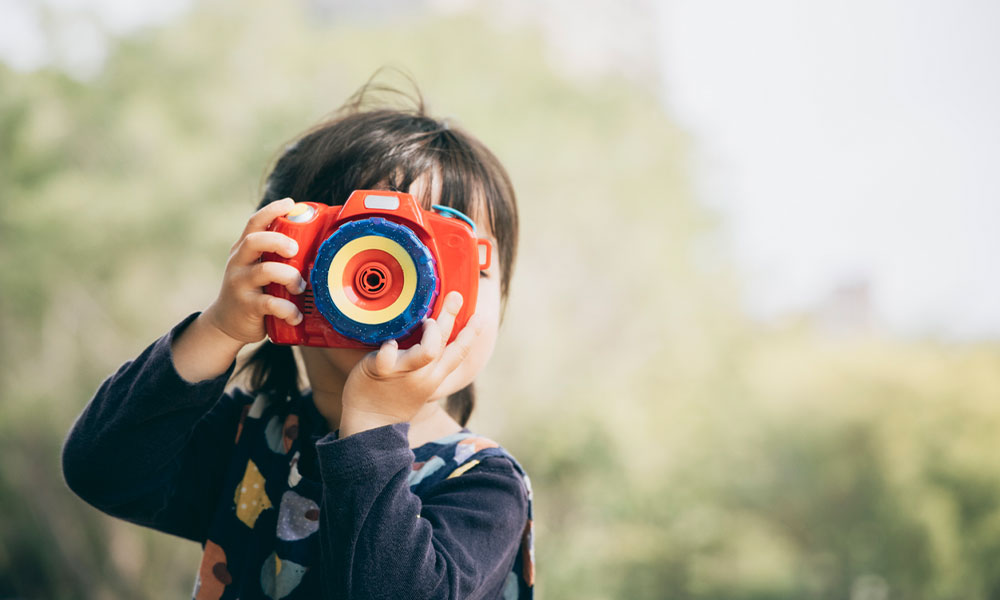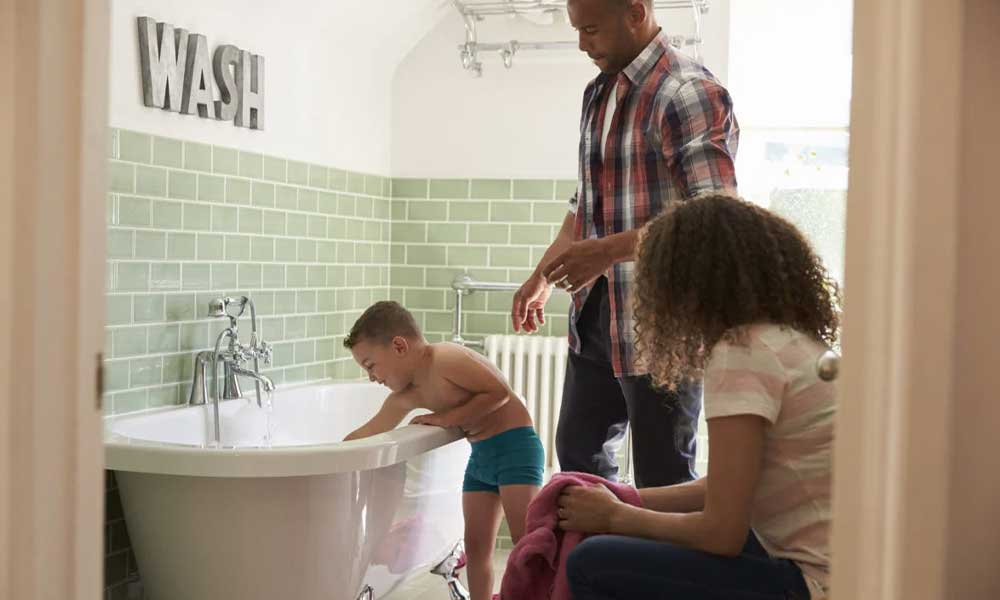Much of our formal education is taken up with logic and rational thought. The way children memorize vocabulary, mathematical equations, even the capitals of each state utilizes the left hemisphere of the brain.
And yet, the right-brained activities are what enthrall pre-verbal children: the contrast of black and white that a newborn sees, the music to which a baby wiggles his fingers and toes, and the grandmother’s lullaby that soothes a crying infant.
A line in A.A. Milne’s Winnie-the-Pooh books reads, “Sometimes the smallest things take up the most room in your heart.” That quote can be said about a parents’ love for their newborn but also about a toddler’s love of music, singing, dancing and bright hues as they scribble, color and finger paint.
Much of our early arts education isn’t intentionally education; we as parent-educators are doing what comes to us naturally. Alyssa Herzog Melby, director of education and community engagement for the Pittsburgh Ballet Theater said, “Your kids can’t be too young to introduce them to the arts. From the moment babies are born and in our arms, we sing songs and dance and move with them. We show them pictures in books and make animal noises. (Even from) birth to age five kids are sponges; it is great to get them out in the world looking at things.”
We let them scribble, then draw, then paint. Begin your infant's creative process with the Baby Einstein + Hape Playful Painter Magic Touch Color Palette, a Montessori-inspired toy that lets them explore color and Iight without any mess.
Introducing your child to music and dance
Suzanne Perrino, senior vice president of education and strategic implementation at the Pittsburgh Symphony, echoed Herzog Melby’s comments: “The best time to introduce music to your child is as early as possible, preferably before the child is born.”
When a mother reads or sings to her baby in utero, the baby hears the sounds partially through bone conduction. Dr. Henry Truby, Emeritus Professor of Pediatrics and Linguistics at the University of Miami, said that after the sixth month, the fetus moves in rhythm to the mother's speech.
Finnish researchers at the University of Helsinki published a study in 2013 involving pregnant women whose babies listened to a one-minute CD of “Twinkle Twinkle Little Star”in utero for five weeks, an average of 170 times. Then at birth and at four months, the researchers did EEG tests as the children listened to the original tune and a slightly altered version.
The children who heard the music (as opposed to a control group who did not) had a larger response to the melody, which only proves, according to the lead researcher Eino Partanen, “A baby can be relaxed and soothed by melodies it hears before birth.”
According to an article titled “Importance of Prenatal Sound and Music” by music therapist Giselle E. Whitwell, “Women all over the world have sung lullabies to their babies. These were very important because as we now know the fetus is having first language lessons in the womb. The inflections of the mother tongue are conveyed not only through speech, but most importantly through song.” So those silly little songs we sing like "The Wheels on the Bus," "Frére Jacques," and "Row, Row Your Boat" are actually teaching language skills.
Getting kids to imitate animals and move their bodies in space to music (and to follow directions) improves gross motor skills. This is why dance schools enroll toddlers and preschoolers. It isn’t to teach them formal ballet technique but to build a motor skill progression in a specific sequence.
If music is what you want to introduce your child to as opposed to, or in addition to dance, Perrino encourages parents, first and foremost, to sing with their children. “Often times, parents feel that their natural singing voice is 'not good enough.' They have been told by someone along the way that they don’t have perfect pitch or that they sing off key."
However, she says, "A parent’s voice is the most treasured by a child... Interacting through music with your child in a positive, engaging way builds confidence, self-expression, and encourages experimentation with their natural instrument – their voice,” said Perrino.
Introducing your child to theater
Other musical opportunities for children and teenagers in most cities include going to performances at opera houses, attending musicals, or seeing live theatre. Theater Services Guide lists companies and playhouses that produce works for children throughout the United States. This website also has a link to puppet shows, too, many of which are for children.
Many cities sponsor International Children’s Theater Festivals in the summer, such as this one in Cleveland, where children watch magic shows, plays, musicals, and interactive comedies.
In order to prepare your children for successful attendance at a theater event, Musical Theater Kids recommends:
- familiarizing children with the storylines and characters beforehand (and in the case of opera, the music, too)
- explaining what good audience member behavior is and how it helps the actors on stage (including that a bathroom break during the show may not be possible)
- emphasizing how fun the whole experience will be
- making sure young children eat before going to the theater, but bringing quiet snacks and toys for intermissions and the waiting period before the show begins.
After the show is over and you've left the building, discuss what the child liked and didn’t like and why. This teaches critical thinking and also will give parents an idea of what kinds of theater experiences would be good in the future.
Introducing your child to visual arts
Many cities possess a wealth of visual arts, from public art displays on corporate campuses to those on city buses or public transportation systems to a proliferation of art galleries and museums. For example, California has a mandate that corporate campuses must include public art. Portland, Oregon, has poetry and artwork around its river walk. And all bus shelters in the Seattle area feature artwork by school-aged children.
Art is everywhere and provides us opportunities to discuss what we see with our children.
Many museums, art galleries, and schools have classes or drop-in session for kids. The Andy Warhol Museum, in Pittsburgh offers activities for middle school and high school students. Studio Programs Coordinator Paul O’Brien said that the Youth Open Studio is a weekly drop-in center for teens in grades eight through 12. “Educators from the Artists Image Resource and the Andy Warhol Museum supervise a cohort of teen shop techs that teach silkscreen printing to middle and high school students.” AWM also offers hands-on art demonstrations for toddlers through adults with paid museum admission.
If you take a child to see art at a museum or art gallery, ask question about what they are seeing. Do hands-on activities and continue the creativity and learning at home. Stock your house with paints and paper, brushes, crayons, markers, pens, pencils and erasers, modeling clay and Play-Doh, scraps of cloth and colored paper, and all other means and modes of creating. You can use Red Ted Arts activities for kids based on the works on 30 great artists to come up with creative ideas if your child runs out of his or her own.
You can continue your visit by viewing the art at the online galleries of The National Gallery of Art, The Museum of Modern Art and The Museum of Fine Arts Boston, all of which have phenomenal online interactive art collections. Also, draw your child’s attention to the fact that art isn’t just in a museum or gallery. It is all around. Play “I Spy” with an artwork theme.
Encourage your child to pursue any kind of art he or she wants. California Governor and parent of three Gavin Newsom said, “An arts education helps build academic skills and increase academic performance, while also providing alternative opportunities to reward the skills of children who learn differently.” And like the rest of our education, arts education starts at home with that first song that we sing or book that we read to our baby before she is born.
British actor Sir Richard Eyre explained the importance of art this way, “Change begins with understanding, and understanding begins by identifying oneself with another person: in a word, empathy. The arts enable us to put ourselves in the minds, eyes, ears, and hearts of other human beings.”
And that is the best reason for parents to introduce their children to the arts in all of its many forms.



